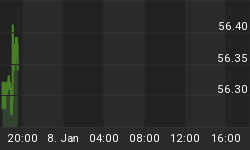Trying to battle San Francisco housing shortage, developers are building a $8-billion neighborhood … on a former nuclear test site. Tempting fate with a bit too much bravado, the blowback is now becoming nuclear itself.
Developer Five Point dreamed of transforming the abandoned San Francisco Naval Shipyard into a community with 12,000 new homes and some 5 million square feet of office and commercial space, and it won approval to do so in 2010.
But fast forward to the present moment and it’s a story of delays, scandals and health concerns, and its future is uncertain amid new allegations of a botched cleanup.
According to a pair of reports from academic researchers released earlier this week, the site's poor safety standards could also subject workers and residents to a higher risk of cancer.
A report from the Committee for Bridge the Gap claimed that almost half of the toxic waste-site cleanup was “suspect" or has "evidence of potential data manipulation or falsification."
The report said that Navy's cleanup standard for radium, the toxic substance found on the site, is almost 900 times higher than the level permitted by the Environment Protection Agency (EPA).
The cleanup is said to have cost $1 billion and was conducted by government contractor Tetra Tech. According to the US Navy, Tetra Tech—which was tasked with testing radioactive contamination at the shipyard from 2002 to 2016--faked soil tests in order to speed up the development project, which is the city’s largest.
Tetra Tech whistleblowers first came forward beginning in 2012 with allegations that the cleanup had been faked on the orders of higher-ups at the company.
In May this year, two former Tetra Tech supervisors were sentenced to eight months in prison for falsifying soil tests. For its part, the company admitted in 2014 that it provided fake soil samples, but was allowed to continue working after blaming the problem on low-level employees.
An independent review last December by the EPA found that as much as 97 percent of the cleanup data was unreliable and must be retested.
However, all this Tetra Tech’s misconduct didn’t raised eyebrows at EPA, since agency last year awarded the company with cleanup of Navajo Area abandoned uranium worth $85 million.
Related: Peter Thiel’s Controversial Big Data Firm Could IPO At $41 Billion
Also in May, a lawsuit was filed against Tetra Tech by 149 residents seeking $27 billion in damages. The suit alleges that the mishandled clean-up exposed residents to toxic materials and put their health at risk. By July, the number of plaintiffs swelled to more than 40,000. The suit is seeking $27 billion in damages.
Late last month, the US government also joined the lawsuit against the company.
Five Point has sold approximately 300-350 newly built homes to current residents, where condos cost up to $1.5 million. The company claims the finished condos are safe because they are built on land that was used for military housing and non-industrial activities.
So far, the neighborhood is home to one of San Francisco's largest developments, including more than 5,000 approved homes and 4 million square feet of commercial space entitled. However, the project has been paused because the Navy won't transfer additional land to the developer until the cleanup is completed.
That so many homes have been sold amid the radiation scare speaks volumes about San Francisco’s housing desperation. With the second-highest population density in the U.S. behind New York City, San Francisco’s housing market is in a state of crisis.
Demand is growing at an unsustainable clip. Nearly 7,000 people have recently applied to live in a new housing complex that had just 95 units, in one example.
In the Planning Commission’s latest “Housing Needs and Trends Report”, researchers note that San Francisco housing cost burdens have “worsened for all but the highest income households”.
The median price of a single-family house soared by 11 percent in June compared to a year ago, or by $159,000, to $1.62 million. Median asking rent is $4,680 a month for a 2-bedroom house while median condo price $1.2 million.
All in all, only about 11 percent of San Francisco households can feasibly afford to buy a home at the current price tags.
By Michael Scott for Safehaven.com
More Top Reads From Safehaven.com:

















